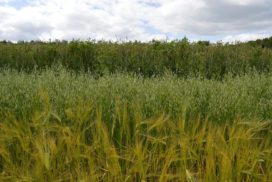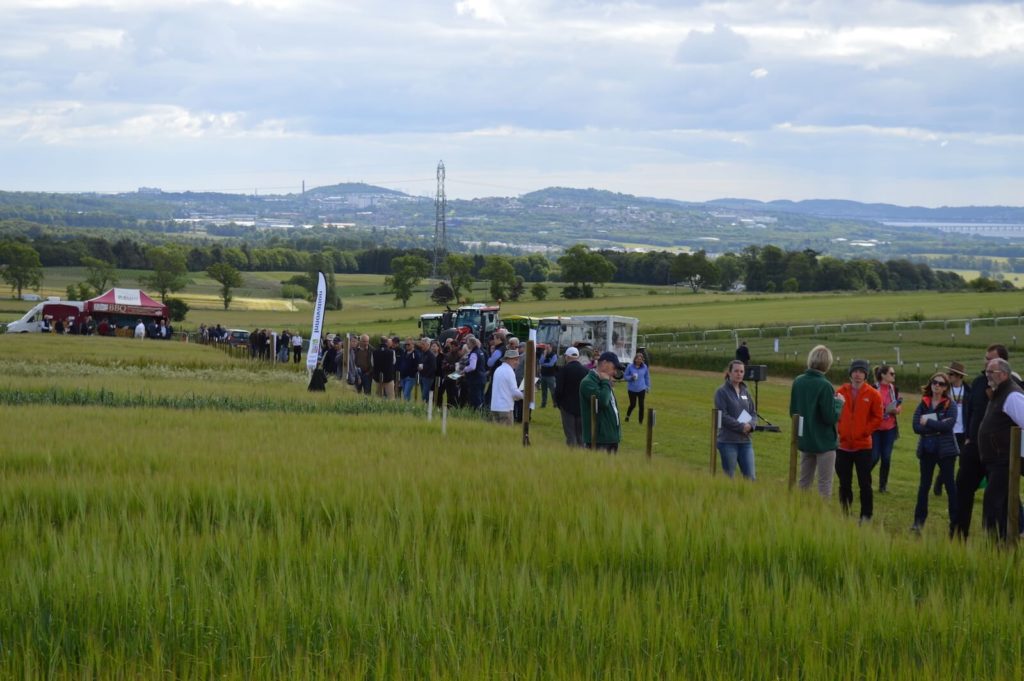Pesticide News in 2020
1 July 2020Much has been said and written about the challenges presented by a rapidly declining choice of chemistry, and the need to rapidly adjust to a reduced reliance on pesticides.

IPM plots at Arable Scotland last year showing some of the reduced input approaches possible with more resistant varieties and naturally derived elicitor products which maximise the crop’s own defences against disease
Of our top 50 active pesticides in arable crops more than 30 are at some risk of withdrawal and losses will be particularly acute this year with the loss of the multisite chlorothalonil on the 20th May. Integral to cereal fungicide programmes for many decades, and also a useful protector against fungicide resistance in higher resistance-risk single site fungicides, it will be hard act to follow. Other multisites such as folpet and mancozeb do of course exist and will partially mitigate the loss although the benefits relative to fungicide cost will be less. It will be important to recognise that rates of other chemistry may need to go up to compensate for the efficacy lost or that it will be necessary to ‘trade up’ to newer more active chemistry – for cereals this will mean the top end SDHI fungicides and the newer azoles. The launch of the new azole ‘Revysol’ has brought a little bit of good news and it is cheering that there are several other new actives being trialled that should make it to market in the next few years. The most imminent is Inatreq, a brand new active group which will arrive in 2021.
Of concern to spring barley crop, there have been several seed treatment losses so that there are no longer treatments that cover the full spectrum of barley seed borne diseases. This means that seed testing of seed becomes more important as the available seed treatments will be strong on net blotch, loose smut or leaf stripe but not all three diseases in one package.
The loss of CIPC (chlorpropham) for sprout suppression in potato stores is the biggest single shift for that crop. This follows the loss of the desiccant diquat and the pending loss of chlorothalonil and thiacloprid. The 2020 crop is the first where CIPC use will not be used and other options such as storage below 3oC, and other suppressants such as maleic hydrazide or ethylene will come in to play.
Chlorothalonil authorisation for disposal, storage and use ends 20 May 2020
Reminder of average, maximum and minimum growth stages in Scottish crop for the same date last year (20 May 2019, source adopt-a-crop). This shows that for winter barley and winter  wheat, usage of chlorothalonil at T1 may well be possible, but that it is unlikely many wheat crops will be able to include chlorothalonil at T2. Some spring barley crops may be in scope at T1 this year but will not benefit from chlorothalonil at T2.
wheat, usage of chlorothalonil at T1 may well be possible, but that it is unlikely many wheat crops will be able to include chlorothalonil at T2. Some spring barley crops may be in scope at T1 this year but will not benefit from chlorothalonil at T2.
| Average | Maximum | Minimum | |
|---|---|---|---|
| Spring Barley | 18 | 31 | 10 |
| Spring Oats | 17 | 22 | 11 |
| Winter Barley | 48 | 61 | 33 |
| Winter Oats | 32 | 33 | 30 |
| Winter Wheat | 35 | 41 | 30 |
Fiona Burnett, SRUC
Article first published in the Scottish Farmer
Sign up to the FAS newsletter
Receive updates on news, events and publications from Scotland’s Farm Advisory Service


